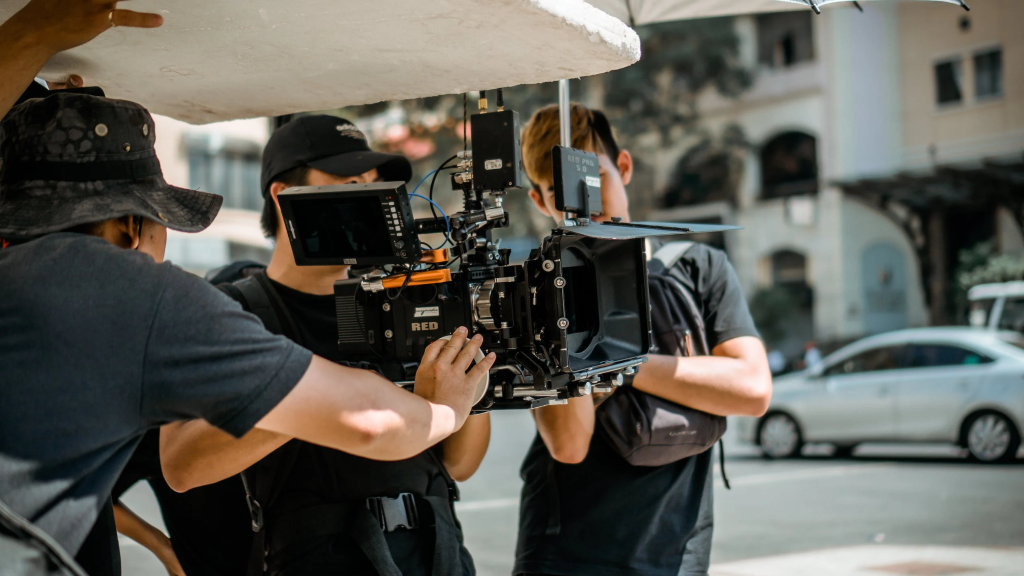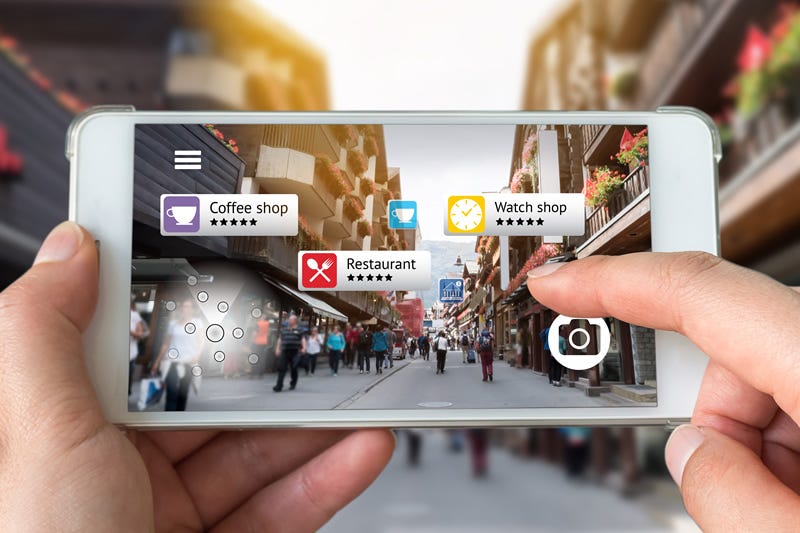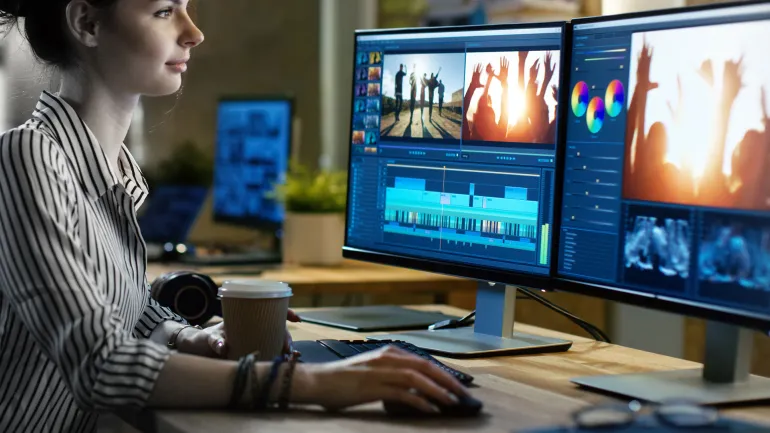Step into the captivating world of motion graphics and discover the latest video trends that are taking the digital landscape. With the power to captivate and engage viewers, motion graphics have become an essential tool for businesses to convey their messages in a visually compelling way. From mesmerizing animations to dynamic typography, this guide will unlock the secrets to creating impactful videos that leave a lasting impression. Get the perfect eCommerce product photography services in Delhi, Noida & Gurgaon.
Importance of Motion Graphics in Video Marketing
In today’s fast-paced digital age, grabbing and retaining the attention of your target audience has become increasingly challenging. This is where motion graphics come in. Unlike static images or plain text, motion graphics have the ability to bring your message to life through dynamic movement and visually stunning animations. They allow you to convey complex ideas and information in a concise and engaging manner.
A standout benefit of motion graphics lies in their remarkable adaptability. They can be used in various types of videos, including explainer videos, promotional videos, social media ads, and even presentations. Whether you want to educate, entertain, or persuade your audience, motion graphics can help you achieve your goals.

Moreover, motion graphics have proven to be highly effective in capturing and retaining viewers’ attention. According to a study by Wistia, videos that incorporate motion graphics have an average viewer retention rate of 37% higher compared to videos without any motion graphics. This means that by leveraging the power of motion graphics, you can significantly increase the chances of your message being heard and remembered.
Incorporating video graphics into your video marketing strategy also helps in building brand recognition and differentiation. With the ability to customize and tailor the visual elements to match your brand identity, motion graphics enable you to create a cohesive and recognizable visual language that sets you apart from your competitors.
By combining the power of visuals, animations, and storytelling, motion graphics have the potential to elevate your brand and leave a lasting impact on your audience. Now, let’s dive into the latest video trends in motion graphics and explore how you can incorporate them into your videos.
The Latest Video Trends in Motion Graphics
The world of motion graphics is constantly evolving, driven by advancements in technology and creative experimentation. To stay ahead of the curve and create videos that resonate with your audience, it’s important to stay up to date with the latest trends. Let’s take a look at some of the most exciting video trends in motion graphics.
1. Augmented Reality (AR)
Augmented reality has gained significant traction in recent years, revolutionizing the way we interact with digital content. Through the integration of virtual elements into the tangible world, augmented reality (AR) creates an immersive and interactive experience for viewers. This technology has opened up new possibilities for motion graphics, allowing them to seamlessly blend with the physical environment.
Incorporating AR into your videos can take your storytelling to a whole new level. Imagine being able to showcase your products in 3D, allowing viewers to interact with them in real-time. This not only enhances the visual appeal of your videos but also provides a more engaging and interactive experience for your audience.

2. 3D Animations
Three-dimensional animations have become increasingly popular in motion graphics, thanks to their ability to add depth and realism to videos. With advancements in software and hardware, creating high-quality 3D animations has become more accessible than ever before.
By incorporating 3D elements into your motion graphics, you can create visually stunning and dynamic videos that capture the attention of your audience. Whether it’s a product demonstration, a virtual tour, or a character animation, 3D animations can bring your ideas to life in a way that traditional 2D animations cannot.

3. Cinemagraphs
Cinemagraphs are a unique blend of static images and subtle motion, creating an intriguing visual effect. These mesmerizing visuals have gained popularity across social media platforms and have become a powerful tool for capturing viewers’ attention.
By incorporating cinemagraphs into your motion graphics, you can create captivating visuals that draw viewers in and keep them engaged. Whether it’s a flickering flame, rippling water, or a fluttering flag, cinemagraphs add a touch of magic to your videos, making them stand out from the crowd.
Now that we have explored some of the latest video trends in motion graphics, let’s take a closer look at two key elements that play a crucial role in creating impactful videos – typography and storytelling.

Exploring The Use of Typography in Motion Graphics
Typography is not just about choosing the right font; it’s about using text as a visual element to convey meaning and evoke emotions. When used effectively in motion graphics, typography can enhance the overall visual appeal and reinforce your message.
One of the key trends in typography is kinetic typography, which involves animating text to create dynamic and expressive visuals. By animating individual letters or words, you can add movement and personality to your videos, making them more engaging and memorable.
In addition to kinetic typography, experimenting with different font styles, sizes, and colors can also help create a visually striking composition. Combining typography with other visual elements like illustrations, icons, or backgrounds can further enhance the impact of your motion graphics.
When working with typography in motion graphics, it’s important to strike a balance between legibility and creativity. Ensure that the text is easily readable while also maintaining a visually appealing design. Remember, the goal is to capture and retain viewers’ attention, so make sure your typography aligns with your overall message and brand identity.
Incorporating 3D Elements in Motion Graphics
Three-dimensional elements can add depth and realism to your motion graphics, taking them to the next level. Whether it’s a product demonstration, architectural visualization, or character animation, 3D elements can create visually stunning and engaging videos.
There are various software tools available that allow you to create 3D animations, even if you have limited experience in 3D modeling. These tools provide pre-built assets and templates that you can customize to match your brand identity. Alternatively, you can also hire a professional 3D animator to bring your ideas to life.

When incorporating 3D elements into your motion graphics, it’s important to consider the overall composition and balance. Avoid overwhelming the viewer with too many complex elements, and ensure that the 3D elements seamlessly integrate with the rest of the video.
The key to the effective use of 3D elements is to enhance the storytelling and convey your message in a visually compelling way. Whether it’s showcasing the features of a product or creating a virtual environment, 3D animations can help you create videos that leave a lasting impression on your audience.
Using Motion Graphics for Storytelling
Storytelling is the core of impactful video marketing. It allows you to create a connection with your audience, evoke emotions, and memorably convey your brand’s message. Motion graphics provide a powerful medium for storytelling, enabling you to bring your ideas to life through visuals and animations.
When using motion graphics for storytelling, it’s important to have a clear and concise narrative. Begin by pinpointing the key message or story that you want to communicate through your video. Break it down into smaller segments or scenes, and think about how motion graphics can enhance each part of the story.
Consider using visual metaphors or symbolic animations to convey abstract concepts or complex ideas. This can help make your videos more relatable and memorable for your audience. Remember, the goal is to create an emotional connection with your viewers, so make sure your story resonates with them on a deeper level.
In addition to visuals, sound also plays a crucial role in storytelling through motion graphics. Choose appropriate background music or sound effects that complement the mood and enhance the overall impact of your video.
Now that we have explored the various elements and techniques in motion graphics, let’s move on to some practical tips for creating compelling motion graphics videos.
Tips for Creating Compelling Motion Graphics Videos
- Plan your video: Before you start creating your motion graphics video, take the time to plan and storyboard your ideas. This will help you visualize the final product and ensure a cohesive and structured narrative.
- Keep it simple: While it’s tempting to go all out with flashy animations and effects, it’s important to remember that simplicity is key. Focus on conveying your message effectively and avoid overwhelming the viewer with too many elements.
- Use visual hierarchy: Guide the viewer’s attention by using visual hierarchy in your motion graphics. Highlight important elements or key messages using size, color, or motion. This will help viewers understand the main takeaways from your video.
- Consider the timing: Timing is crucial in motion graphics. Pay attention to the speed and rhythm of your animations, ensuring that they flow smoothly and match the overall tone and mood of your video.
- Test and iterate: Don’t be afraid to test your motion graphics video with a smaller audience or focus group before releasing it to a wider audience. Gather feedback and make necessary improvements to enhance the effectiveness of your video.
Remember, the key to creating compelling motion graphics videos is to experiment, iterate, and continuously improve based on feedback and data.

Tools and Software for Creating Motion Graphics
Creating motion graphics videos doesn’t have to be a daunting task. There are several tools and software available that can help you bring your ideas to life, even if you have limited experience in animation or design.
Here are some popular tools and software for creating motion graphics:
- Adobe After Effects: One of the most widely used software for motion graphics and visual effects. After Effects provides a range of features and tools for creating stunning animations and compositions.
- Blender: A free and open-source 3D creation suite with powerful animation and modeling capabilities. Blender is ideal for creating complex 3D animations and visualizations.
- Cinema 4D: A professional 3D modeling, animation, and rendering software. Cinema 4D is known for its user-friendly interface and extensive library of pre-built assets.
- Final Cut Pro: A video editing software for Mac users that includes features for creating motion graphics and visual effects. Final Cut Pro is popular among video editors and motion graphics artists.
- Vyond: An online platform that allows you to create animated videos and presentations without any prior animation experience. Vyond provides a range of customizable templates and assets.
These are just a few examples of the tools and software available for creating motion graphics. Selecting the option that aligns most effectively with your requirements and financial considerations is crucial.
Examples of Successful Motion Graphics Campaigns
To further inspire and guide you in creating impactful motion graphics videos, let’s take a look at some examples of successful campaigns:
- Dropbox “Wall of Dropbox”: This motion graphics video uses a combination of 2D and 3D animations to showcase the features of Dropbox. The visuals are playful and engaging, capturing the attention of the viewer.
- Google “Year in Search”: Google’s “Year in Search” videos have become a yearly tradition, summarizing the most searched topics and events. The motion graphics in these videos are simple yet powerful, evoking a range of emotions.
- Slack “So Yeah, We Tried Slack”: This motion graphics video humorously explains the benefits of using Slack for team communication. The animations and kinetic typography add a fun and dynamic touch to the video.
These examples demonstrate how motion graphics can be used to effectively convey complex ideas, evoke emotions, and engage viewers. By studying successful campaigns, you can gain insights into the techniques and strategies that work best for your target audience.
Harnessing the Potential of Motion Graphics for Your Brand
Motion graphics have the power to transform your videos into visual masterpieces that captivate and engage your audience. By incorporating the latest trends, such as augmented reality, 3D animations, and cinematography, you can create videos that leave a lasting impression on your viewers.
Whether you are a seasoned video producer or a novice filmmaker, this guide has provided invaluable insights and practical tips to help you harness the full potential of motion graphics. From using typography effectively to incorporating 3D elements and storytelling, each element plays a crucial role in creating compelling motion graphics videos.
The world of motion graphics is constantly evolving, driven by advancements in technology and creative experimentation. Stay up to date with the latest trends, experiment with different techniques, and continuously improve based on feedback and data.
Now, armed with the knowledge and inspiration from this guide, it’s time to unleash the power of motion graphics and create videos that captivate, engage, and leave a lasting impact on your audience. So go ahead, dive into the exciting world of motion graphics, and let your creativity soar.
Know More About – Product Photography, Model Photoshoot Service, Food Photography Service, Outdoor Photography Service, E-commerce Product Photography, LifeStyle Product Photography

